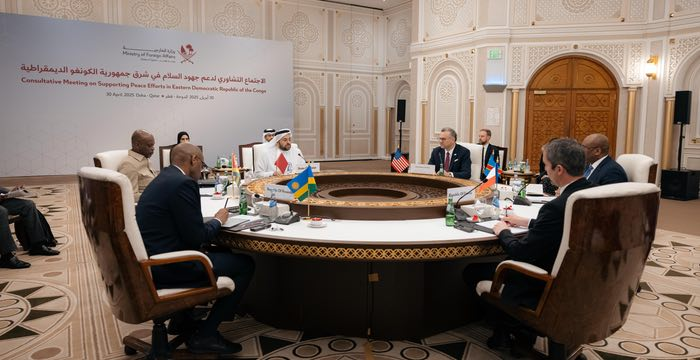North Korea Unveils New Warship Amid Rising Global Tensions
In a significant ceremony that took place at the North Korean port city of Nampo on Friday, Kim Jong Un officially unveiled the Choe Hyon, a formidable 5,000-ton frigate that has generated considerable interest and concern among military analysts and global observers alike. This newly launched vessel is equipped with an impressive array of advanced weaponry, prominently featuring vertical launch systems capable of firing both cruise and ballistic missiles.
Military analysts have raised alarms regarding the design and capabilities of the Choe Hyon, suggesting a possible involvement or at least inspiration from Russia as North Korea embarks on a significant modernization of its naval fleet. Jacob Parakilas, a prominent research leader in Defence Strategy, Policy and Capabilities at RAND Europe, pointed out the noteworthy timing of the frigates construction and the ambiguous nature of Russian support for North Korea. He indicated that the relationship may extend beyond mere imitation of Russian military designs, hinting at a deeper collaboration.
The launch of the Choe Hyon carries substantial significance, particularly against the backdrop of escalating tensions between North Korea and Western nations. This event follows the historic acknowledgment by both Russia and North Korea that North Korean troops are now participating alongside Russian forces in the ongoing conflict in Ukraine. Such military cooperation could suggest a deepening alliance as both countries face increasing scrutiny and pressure from the international community.
During the ceremony, Kim Jong Un highlighted the frigates impressive arsenal, which includes a deck gun, close-in air defense systems, and advanced radar technology designed to detect potential threats. Images released from the event featured a missile defense system that closely resembles Russias Pantsir S-1, capable of engaging aerial threats with medium-range guided missiles. Parakilas emphasized that the presence of this air defense technology is a strong indicator of possible Russian assistance in the development of the Choe Hyon.
Adding to the conversation, Kim Duk-ki, a retired South Korean admiral, shared insights during a CNN interview, suggesting that Russia may have provided critical technology for the frigate's missile systems. He warned that if North Korea successfully integrates hypersonic ballistic missilesclaims of which were made during tests conducted earlier this yearinto the Choe Hyon, the implications for regional security dynamics could be profound.
Evidence has been accumulating that Russia could be aiding North Korea in circumventing international sanctions by providing technological support for its military modernization efforts. Earlier this year, James Patton Rogers, the executive director of the Cornell Brooks Tech Policy Institute, speculated that Russia likely assisted North Korea in developing a new AI-enabled drone, further demonstrating the potential collaboration between the two nations.
Parakilas remarked that the significant array of weaponry aboard the Choe Hyon underscores the influence of Russian military philosophy, which tends to favor smaller, heavily armed vessels. He articulated that this philosophy reflects a belief that warships should be capable of conducting total warfare rather than just participating in a broader range of maritime operations.
However, Joseph Bermudez Jr., the Korea chair at the Center for Strategic and International Studies in Washington, DC, provided a more cautious perspective. He stated that there is currently no concrete evidence of direct Russian assistance in the construction of the frigate. While acknowledging that North Korean naval designers may have drawn inspiration from Russian vessels, he affirmed that the capabilities of the Choe Hyon are still substantial and worthy of attention.
Measuring approximately 120 meters in length, the Choe Hyon is reportedly the largest naval vessel ever constructed by North Korea, dwarfing its existing fleet of about 374 smaller patrol and coastal vessels, as well as two outdated frigates. During the launch event, Kim asserted that North Korea plans to operationalize the frigate within a year, framing it as a necessary defensive measure against perceived aggression from the United States in the region.
Parakilas cautioned that the introduction of this new warship could provide North Korea with enhanced options for a ballistic missile "first strike," potentially allowing it to target areas with reduced air defense capabilities. However, he also noted that as a surface vessel, the Choe Hyon may be more vulnerable to detection and potential attacks compared to submarines.
The International Institute for Strategic Studies (IISS) has posited that the true capabilities of the Choe Hyon will only become fully apparent once the vessel is operational. They suggested that while the activities surrounding the new frigate at Nampo are likely to be closely monitored, it may take time before its intended use and operational effectiveness can be accurately assessed. Bermudez Jr. echoed this sentiment, asserting that the vessels forthcoming patrols will be critical in evaluating its seaworthiness and overall capabilities.






























